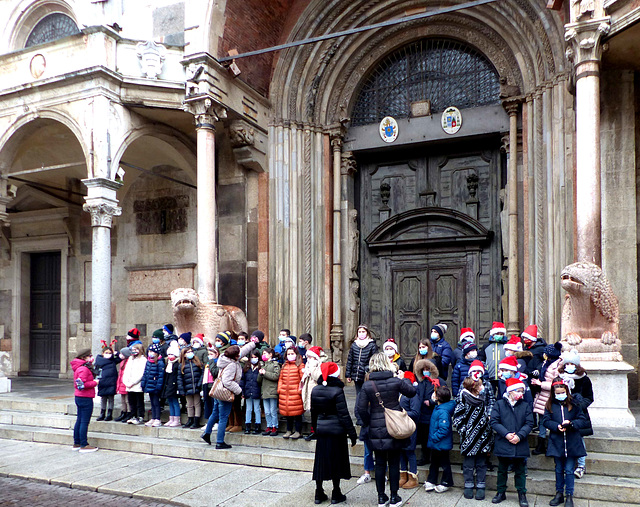Cremona - Battistero (PiP)
Parma - Banca Nazionale del Lavoro
Parma - Duomo
Parma - Duomo
Parma - Duomo
Parma - Duomo
Parma - Duomo
Parma - Duomo
Parma - Duomo
Parma - Duomo
Parma - Baptistery (PiP)
Modena - Santa Maria della Pomposa
Modena - Santa Maria della Pomposa
Modena - Duomo
Modena - Duomo
Modena - Duomo
Modena - Duomo
Modena - Duomo
Modena - Duomo
Modena - Duomo
Modena - Duomo
Modena - Duomo
Modena - Duomo (PiP)
Cremona - Duomo
Cremona - Duomo
Cremona - Duomo
Cremona - Duomo
Cremona - Duomo
Crema - Santa Maria della Croce
Crema - Santa Maria della Croce
Crema - Santa Maria della Croce
Venezia - Basilica di San Marco
Venezia - Basilica di San Marco
Venezia - Basilica di San Marco
Venezia - Basilica di San Marco
Venezia - Basilica di San Marco
Venezia - Basilica di San Marco
Venezia - Basilica di San Marco
Venezia - Basilica di San Marco
Venezia - Basilica di San Marco
Venezia - Basilica di San Marco
Venezia - Basilica di San Marco
Venezia - Basilica di San Marco
Venezia - PELLICCIOLI
Venezia - La Maddalena
Location
See also...
Keywords
Authorizations, license
-
Visible by: Everyone -
All rights reserved
-
40 visits
Cremona - Duomo


Cremona, located on the left bank of the Po river, was founded by the Romans as a military outpost against the local Celtic tribes.
Cremona grew into a large town in 69 AD, when it was sacked and destroyed by the troops of Vespasian, fighting to install him as Emperor against his rival Vitellius. Cremona was rebuilt, but it seems to have failed to regain its former prosperity. When the Lombards invaded Italy in the 6th century, Cremona was a Byzantine stronghold as part of the Exarchate of Ravenna.
In 603 Cremona was conquered by the Lombard King Agilulf and again destroyed, rebuilt in 615, and ruled by Lombard dukes.
Cremona is first mentioned in a document of 1098, by which the city received a territory as a fief from the Margravine Matilda of Canossa. In the war of the Lombard League against Frederick Barbarossa, Cremona, after having participated in the destruction of Crema in 1160 and Milan in 1162, finally joined the League.
In the conflicts between the Ghibellines and the Guelfs, Cremona, sided with the Ghibellines. Frederick II, Holy Roman Emperor, made a triumphal procession in Cremona in 1237, showing off his elephant. This animal is known today as the "Cremona Elephant".
With the final downfall of the Hohenstaufen, the Guelfs came to power in Cremona. The city rebelled against King Henry VII in 1311, but eventually surrendered; it was deprived of many rights on Henry's orders, and the city fortifications were demolished. Finally, Cremona was taken possession of by Galeazzo I Visconti in 1322.
The foundation stone was laid in 1107, but 10 years later the construction collapsed due to an earthquake. It was not until 1129 that a new building was started. The cathedral was consecrated in 1190. At this time, the church did not yet have its present shape. The façade was not completed until the 15th century. The redesign of the narthex replaced a simpler wooden connection between the cathedral and the bell tower. It gave the piazza the appearance that is roughly the same as today.
School trip to the cathedral in December
Cremona grew into a large town in 69 AD, when it was sacked and destroyed by the troops of Vespasian, fighting to install him as Emperor against his rival Vitellius. Cremona was rebuilt, but it seems to have failed to regain its former prosperity. When the Lombards invaded Italy in the 6th century, Cremona was a Byzantine stronghold as part of the Exarchate of Ravenna.
In 603 Cremona was conquered by the Lombard King Agilulf and again destroyed, rebuilt in 615, and ruled by Lombard dukes.
Cremona is first mentioned in a document of 1098, by which the city received a territory as a fief from the Margravine Matilda of Canossa. In the war of the Lombard League against Frederick Barbarossa, Cremona, after having participated in the destruction of Crema in 1160 and Milan in 1162, finally joined the League.
In the conflicts between the Ghibellines and the Guelfs, Cremona, sided with the Ghibellines. Frederick II, Holy Roman Emperor, made a triumphal procession in Cremona in 1237, showing off his elephant. This animal is known today as the "Cremona Elephant".
With the final downfall of the Hohenstaufen, the Guelfs came to power in Cremona. The city rebelled against King Henry VII in 1311, but eventually surrendered; it was deprived of many rights on Henry's orders, and the city fortifications were demolished. Finally, Cremona was taken possession of by Galeazzo I Visconti in 1322.
The foundation stone was laid in 1107, but 10 years later the construction collapsed due to an earthquake. It was not until 1129 that a new building was started. The cathedral was consecrated in 1190. At this time, the church did not yet have its present shape. The façade was not completed until the 15th century. The redesign of the narthex replaced a simpler wooden connection between the cathedral and the bell tower. It gave the piazza the appearance that is roughly the same as today.
School trip to the cathedral in December
Delirium, Marco F. Delminho, Paolo Tanino have particularly liked this photo
- Keyboard shortcuts:
Jump to top
RSS feed- Latest comments - Subscribe to the comment feeds of this photo
- ipernity © 2007-2024
- Help & Contact
|
Club news
|
About ipernity
|
History |
ipernity Club & Prices |
Guide of good conduct
Donate | Group guidelines | Privacy policy | Terms of use | Statutes | In memoria -
Facebook
Twitter

Sign-in to write a comment.